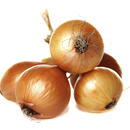All
A pathogen that invades the lining of the small intestine. C. jejuni is the most commonly-isolated species.
Typical Symptoms
- Fever
- Severe abdominal cramps
- Bloody diarrhea
Most at risk
- Young children
- The elderly
- The immunocompromised
How is it spread?
- Contaminated food typically undercooked poultry or water
- Occasionally through person-to-person contact
-
Examples:
- If infected person does not wash his/her hands properly after using the toilet, can be passed along by physical contact or by handling food
- If contaminated water (through human or animal feces) touches food at any stage (irrigation, washing, rinsing, etc.), contamination can also occur
What is it?
Clostridium perfringens or C. perfringens is the third most common cause of foodborne illness in North America, causing an estimated one million cases per year. These spore-forming bacteria can be found as a normal component of decaying plant life, marine sediment, soil, and in the intestinal tract of many animals, including humans.
How is it spread?
They prefer environments with little to no oxygen and typically cause illnesses when large quantities are ingested through inadequately cooked meat and poultry or in prepared food that has been left at the wrong temperature for too long. These bacteria thrive between 40-140˚F (aka the danger zone); they cannot grow at proper refrigerator or freezer temperatures.
Typical Symptoms
Symptoms include abdominal cramping, diarrhea, vomiting, and fever. It cannot be passed from one person to another. Most occurrences resolve themselves within 24 hours, but extreme cases of Type C can result in death.
Most at risk
Young children, pregnant women, the elderly, and immunocompromised persons are most at risk, but given the right conditions, anyone can suffer this illness.
For more information, see:
http://www.cdc.gov/foodsafety/clostridium-perfingens.html
http://en.wikipedia.org/wiki/Clostridium_perfringens
http://www.foodsafety.gov/poisoning/causes/bacteriaviruses/cperfringens/index.html
Cold chain management is the control and maintenance of storage temperatures to prevent product deterioration and bacteria growth, as well as to prolong shelf-life; it is the management of the real-time series of events that occur from seed to fork.
The cold chain combines all of the links between transport and storage
- From harvest point to transportation (refrigerated trucks)
- Transportation to production or shipping facilities
- Production/shipping facilities to distribution warehouses
- Distribution warehouses to foodservice operators' coolers
- Storage inside foodservice operators' coolers until time of plating
In 1914, the Public Health Service first used coliform as a general name to indicate members of the Enterobacteriaceae family, a broad class of indicator microorganisms. Coliforms can be used to show the presence of more dangerous disease-causing bacteria or viruses. They can also be found in the intestinal tracts of humans and animals, feces, water, soil, and vegetation.
Coliforms are normally present on raw plants; positive testing for them does not necessarily indicate the produce has come in contact with feces.
Are All Coliforms Dangerous?
- There are many types of coliforms, not all make people sick, but some do
- Since there are so many types, exposure has effects varying from nothing to serious illnesses
How are they spread?
- Frequently spread in hospital environments
- Fruits or vegetables may become contaminated from soil or manure fertilizers during growing or harvesting periods
- Contaminated water can pass bacteria if it touches food at any stage (irrigation, washing, rinsing, processing, etc.)
What is it?
Cryptosporidium parvum, also known as crypto, is a microscopic protozoa that can cause a parasitic disease in the intestines of mammals, including humans. It is considered the most significant waterborne pathogen in developed countries. In fact, it sickened 403,000 people in Milwaukee, Wisconsin in 1993. The protozoa itself is protected by a thick outer shell that keeps it alive outside the body for long periods; it is also chlorine resistant.
How is it spread?
Cryptosporidium is typically spread by drinking contaminated water, eating infected food, or being contaminated by feces. It only takes two to ten cryptosporidium parasites to cause infection.
Typical Symptoms
Symptoms include acute, non-bloody diarrhea, nausea, vomiting, abdominal pain, fatigue, and loss of appetite.
Most at risk
Young children, pregnant women, the elderly, and immunocompromised persons are most at risk, but given the right conditions, anyone can suffer this illness.
For more information, see:
http://en.wikipedia.org/wiki/Cryptosporidium_parvum
http://www.cdc.gov/parasites/crypto/
http://www.foodborneillness.com/cryptosporidium_food_poisoning/

Fresh-run onions exhibit light color and flaky skin; expect typical cured storage-onion characteristics to include globe-like shape, firm texture, dark skin, and single centers.
What is Cyclospora?
A one-celled parasite spread by water or food contaminated with infected feces.
Typical Symptoms
- Severe abdominal cramps and diarrhea
- Loss of appetite and substantial weight loss
- Bloating, gas, nausea
- Vomiting, fever, and fatigue
Most at risk
- All ages are at risk for infection
How is it Spread?
- Contaminated food or water
